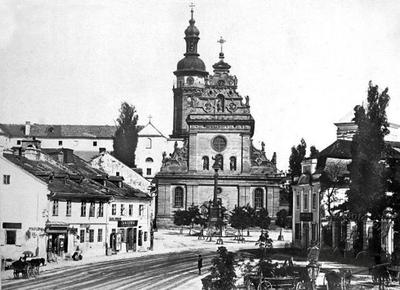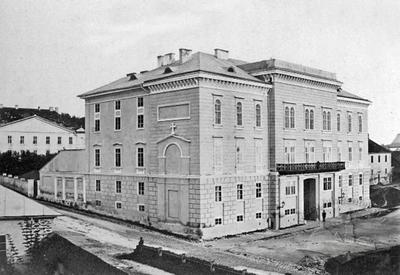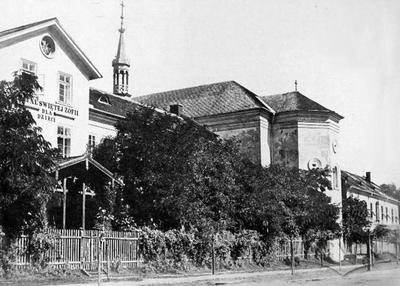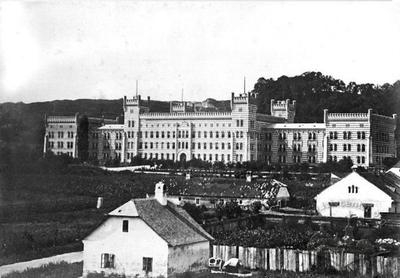
View of St. Andrew's Church in Halytska Square
- ID: 337
- Place: Lviv
- Date: 1860-1870
Black and white photo of the Cathedral of the Assumption of the Blessed Virgin Mary - the main Lviv church of the Roman Catholic Church. The cornerstone of the church was laid in 1349 by King Casimir the Great. Over the centuries, this church was rebuilt, incorporating styles from different eras - Gothic, Renaissance and Baroque. The main altar houses the most valuable relic of the church - a copy of the Miraculous Icon of the Mother of God All-Merciful. The photo was taken with a wide-angle "fisheye" lens from the window of a corner building, which allowed us to photograph the large building from a short distance, but somewhat distorted its proportions. Thanks to the optics, the bell tower of the Russian church, which stands at the opposite end of the residential quarter around the market square, is even visible in the photo. Lviv Cathedral of the Ascension of the Blessed Virgin Mary from the 1440s. is the center of the spiritual life of Lviv Catholics. Within these walls are concentrated historical, artistic and religious monuments of Lviv's past. The original wooden Church of the Holy Trinity burned down in 1350. The current building, one of the oldest Gothic monuments of Lviv, was built over many decades. In 1360-1405 it was built by Mikolaj Nichko, Piotr Shtecher, Martin Hanseke; in 1405-1493 - by Ambrosius Rabisch, Joachim Grom, Hans Blecher. In 1415 the church became a cathedral. In 1493-1760 many chapels were completed, new altars and tombstones were erected. The fire of Lviv in 1527 caused a lot of damage to the cathedral: the roof and vaults burned down, and the bells melted. On April 1, 1656, King Jan Casimir solemnly made a vow to the Miraculous Image of the Mother of God of Murkova in the cathedral. The reconstruction of 1760-1778 was led by architect Petro Poleiovsky, at which time the interior was arranged, and the number of chapels and altars was significantly reduced. There was another reconstruction in 1892-1899 (architect Tadeusz Obminski). On June 25, 2001, the cathedral was visited by His Holiness John Paul II. Two years later, a plaque with a bas-relief of the Pontiff was installed at the entrance to the church. Text: Iryna Kotlobulatova



